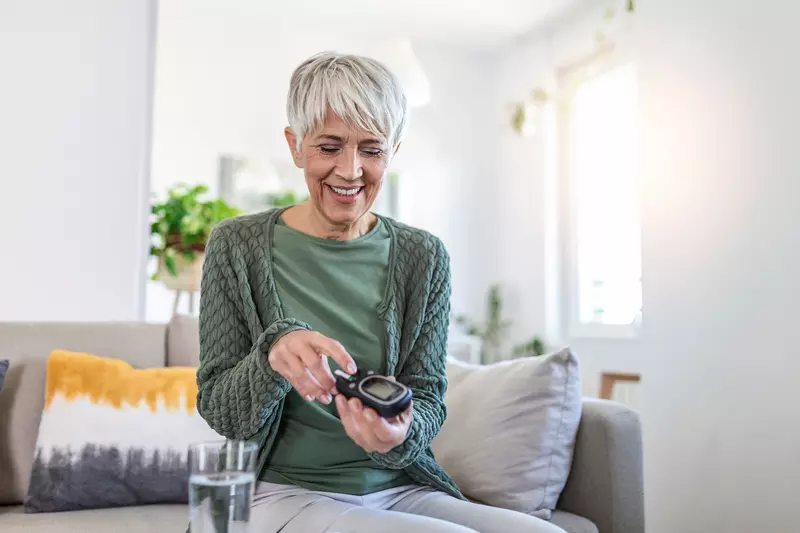- AdventHealth

Choose the health content that’s right for you, and get it delivered right in your inbox.
When it comes to managing your diabetes, it’s important to have a good snapshot of your blood sugar levels and what causes the ups and downs. We’re here to explain the latest method in blood sugar monitoring, time in range, so you can have the most accurate numbers and recognize patterns in your health.
What is Time in Range?
“Time in range,” on a continuous glucose monitor (CGM), tells you how much of your day is spent in your ideal blood sugar range. The longer your time in range, the less likely you are to develop certain diabetes complications. Tracking time in range can also help you avoid high or low blood sugar episodes.
While a finger stick reads your blood sugar one prick at a time, and an A1C test tracks your average glucose level over two to three months, the CGM gives you real-time updates for as long as you wear it (usually two weeks at a time). While both the finger stick test and A1C tests are useful, time in range is the most precise blood sugar tracking method you can use.
How Does it Work?
Time in range tells you how much of your day is spent in your ideal blood sugar range, expressed either in hours or percentages. The longer your time in range, the less likely you are to develop certain diabetes complications. Tracking time in range can also help you avoid high or low blood sugar episodes.
Up-to-the-Minute Information
Measuring your time in range requires a continuous glucose monitor, which uses a sensor on your body to measure your blood sugar in real time.
CGMs have become more accurate, convenient and affordable. Health care providers recommend them for many people with Type 1 and Type 2 diabetes, especially those who use insulin.
The software or app with your CGM will calculate and report your time in range. You can use this data to better understand how your daily habits affect your blood sugar levels.
In most cases, eating nutritious foods, taking medications as your provider prescribes, managing stress and being active all increase your time in range.
They’re also good for emergencies — and preventing them. For example, if you’re starting to feel low blood sugar, a finger stick takes up precious time to do a test while the CGM gives you an instant reading whenever you need one. That way, you can always know where you are with your levels.
Dialing in the Details
If you think you could benefit from using a CGM, talk with your health care team about making the switch and setting the right targets.
First, your provider will help you determine your ideal blood sugar range. For most people with diabetes, that’s 70 to 180 mg/dl. Then, you’ll learn how to set goals based on your range, such as:
- Seventeen hours a day (70% of time) in target range
- Less than six hours per day (25% of time) above target range
- Less than one hour per day (4% of time) below target range
Your numbers might vary, especially if you’re older or at higher risk for complications. Even stress levels on any given day can affect your numbers.
These targets might feel challenging. It may take lifestyle changes in your diet, exercise routine and other healthy choices to reach them over time. But even on days when you don’t quite hit your target, making progress toward increasing your time in range improves your health.
World-Class Diabetes Care
For all of the challenges of living with diabetes, remember that we’re here to answer any questions you have about your care. We’ll help you manage your condition as you learn to take charge of your whole health.
Our world-class diabetes care team helps thousands of patients like you to delay and avoid many of the complications associated with diabetes. Visit us here for care that makes you feel whole.



